Traffic calming refers to changes in the road’s width, elevation and surface in order to slow traffic down or deter it from using that road in order to improve safety for pedestrians and cyclists. There are many ways in which this can be achieved. Road planners and traffic engineers consider the existing road layout, the requirements for speed reduction, the impact on surrounding houses of additional noise created by the measures, the proximity of alternative routes and the cost of implementing the measures.
There are three tenets of traffic calming: enforcement, education and engineering.
Enforcement
Enforcement is usually carried out by traffic police.
Speed limits
Speed limits can be set lower on routes where many pedestrians and cyclists share the roads. For example, central Sydney’s 40kph limit reflects the large amount of foot and cycle traffic. A lower limit can also be used on quieter residential streets where vehicles may tend to use it as a short cut. These are usually accompanied by engineering measures such as speed humps or chicanes.
Speed limits that are set lower than a driver expects usually have to be accompanied by physical engineering methods of slowing the driver down.
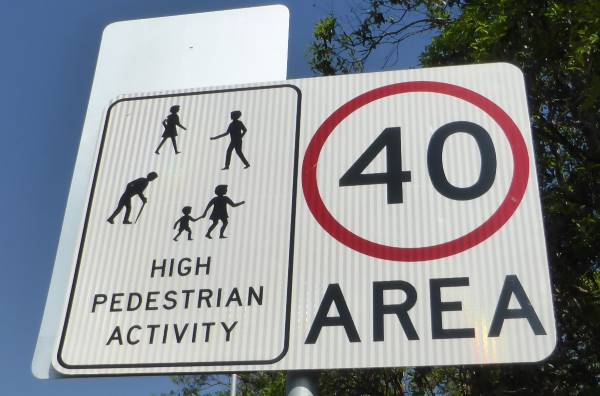
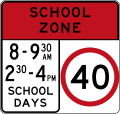 Enforcement can also include reducing limits near schools and hospitals, and using vehicle activated signs that let drivers know what speed they are doing.
Enforcement can also include reducing limits near schools and hospitals, and using vehicle activated signs that let drivers know what speed they are doing.
Speed cameras are used to catch offenders.
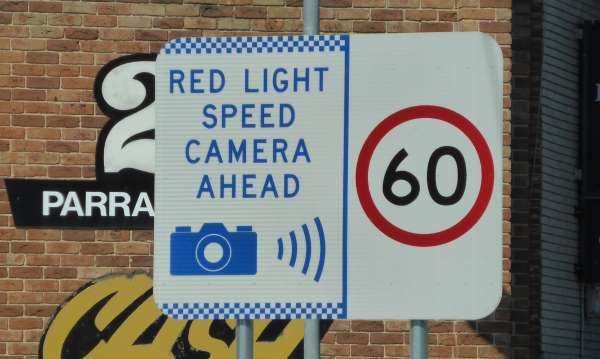
Education
Education usually accompanies enforcement, especially where a speed limit has been recently changed. These can consist of billboards and local advertisements (e.g. on bus stops), additional signs, and other media such as radio ads.
Local residents sometimes create their own signs to make drivers aware of children playing in the street.
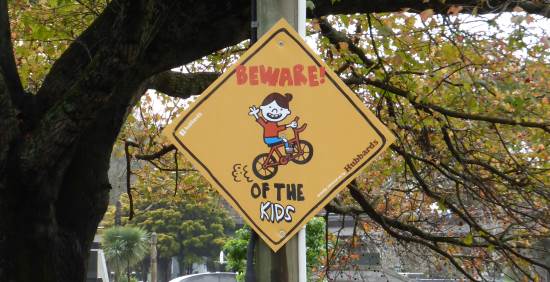
Engineering
Engineering options are more diverse and employ one or more of the following techniques:
- Narrowing
- Vertical deflection
- Horizontal deflection
- Restrictions
Engineered options are designed to increase the complexity and cognitive load of driving, making the driver naturally slow down, or to create discomfort above certain speeds.
Narrowing
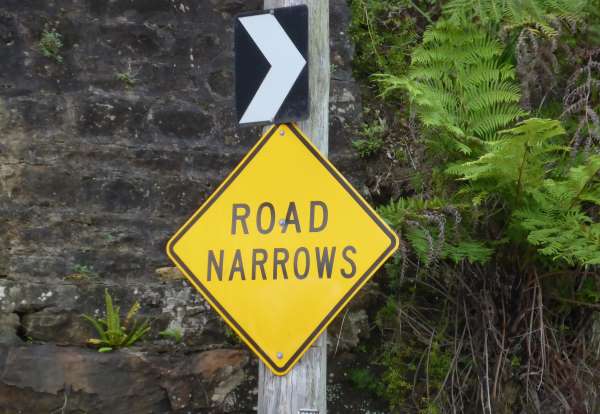
When lanes are narrower, drivers tend to slow down. They don’t include any actual change to the road surface, therefore it’s the perception of danger that is created. Narrower lanes can be created by widening the footpath, adding a cycling lane, adding bollards or planters or allowing on-street parking.
In the photo below (front, right), you can see the extra refuge created to slow vehicles turning left, and to give pedestrians less road to cross before the refuge on the left.
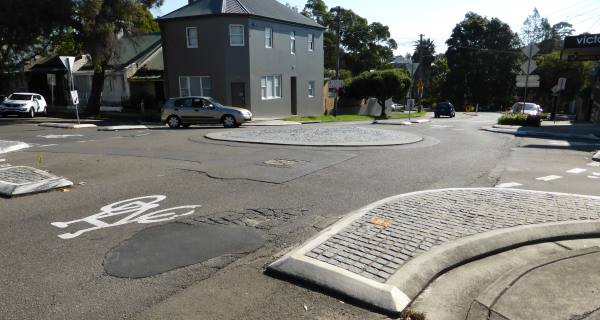
In the photo below in Downtown Sydney you can see the road narrows just in front of the taxi, and then there are parking bays.
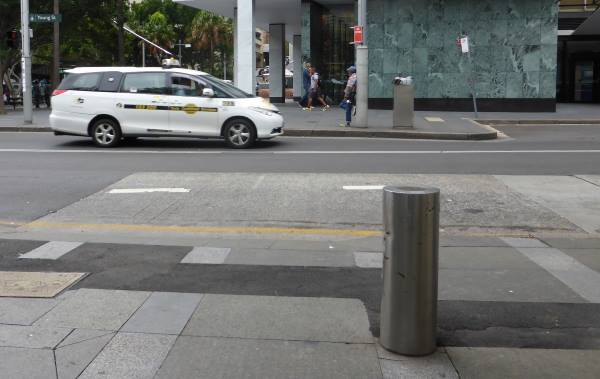
Lanes are sometimes narrowed at pedestrian crossings using kerb extensions or chokers.
Pedestrian refuges in the middle of the street give pedestrians a protected area when crossing.
Vertical deflection
Vertical deflection measures create additional noise:
- Heavy vehicles with or without loads can be noisy over rough ground
- Vehicles have to brake before and accelerate afterwards
They also create more pollution because of the additional braking and acceleration required.
A warning is usually given with a sign and an advisory speed.
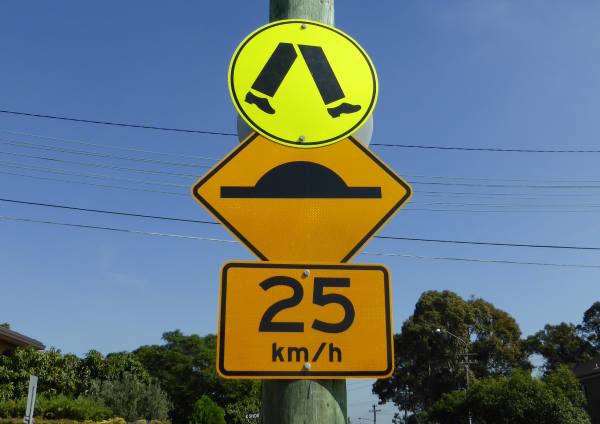
Speed bumps are short bumps in the road, sometimes with a split in the middle of the road to allow emergency vehicles through.
Speed humps are less aggressive than speed bumps, and therefore make less noise when vehicles pass over them. They are more frequently used on residential streets.
Speed cushions are like speed humps but have a wide track gap on either side to let heavy vehicles and larger emergency vehicles (fire engines, for example) pass.
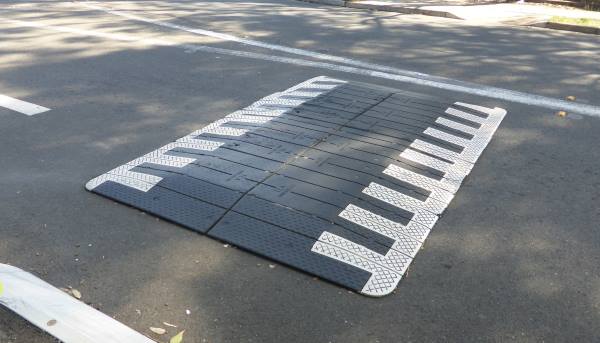
Speed tables are large, flat-topped cushions. They can also feature raised pedestrian crossings, and are frequently used at intersections.
The following photo shows a speed table with pedestrian crossing, choker and pedestrian refuge (small islands) in the centre.
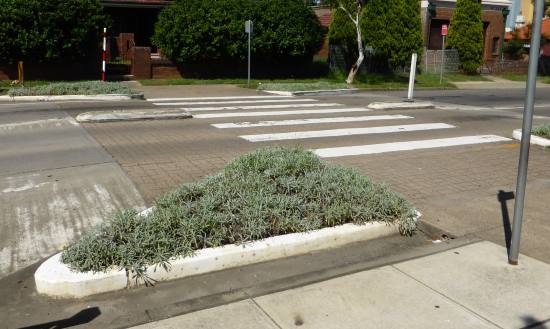
Surface material changes make drivers aware of their speed, e.g. by using bricks or cobblestones. Different colours can be used, too.
Horizontal deflection
Horizontal deflection makes the vehicle swerve slightly.
Pedestrian refuges (as shown below), kerb extensions and chokers can provide horizontal deflection.
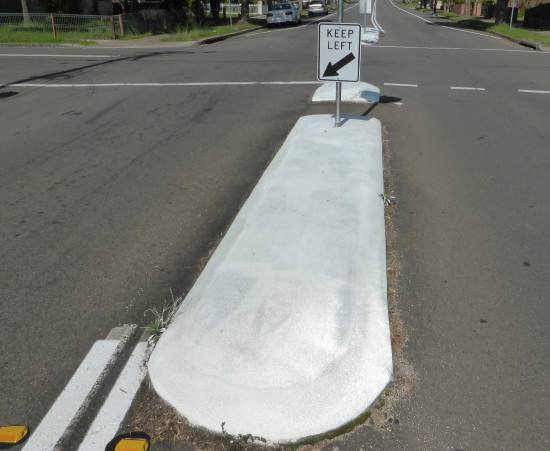
The following photo shows a choker preparing traffic for a mini roundabout
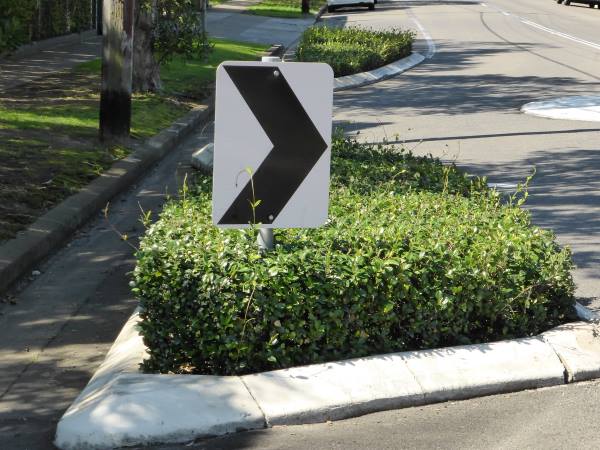
Adding roadside parking has the effect of narrowing the lanes and can necessitate a driver to move to the right.
Chicanes that also narrow the road.
Blocks and restrictions
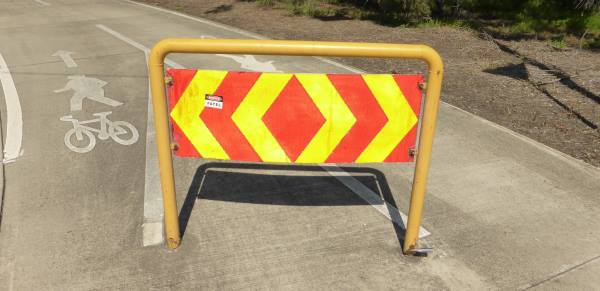
Stopping traffic from turning into certain streets, or closing off streets to create pedestrian zones or cul-de-sacs can divert drivers onto arterial routes.
Boom barriers close off areas to authorised vehicles only.
Part of the idea of traffic calming measures is to channel more traffic onto arterial routes which are more able to deal with traffic volume, and restrict side streets just to locals who need to use them to get to their houses.
